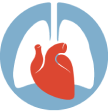3D printing has multiple useful applications in aortic surgery. It can be used in anatomical education for medical students who are pursuing their degrees. 3D printed models have helped patients have the best understanding of their anatomy, disease, surgical risk, and more satisfaction during the informed consent process. It is also possible to create 3D printed medical devices used directly in the treatment of patients.
As a standard of care, in elective aortic surgery, a 3D printed model is made for preprocedural planning, training, and creation of personalized aortic grafts. In particular, this recent technology allows an accurate and real 3D replica, making possible the use of materials that resemble the properties of the heart and great vessel tissues. 3D printing can also provide a wide variety of normal and pathological anatomical examples for educational purposes. Moreover, it can provide better insight into the disease and recommended treatment options during patient and family counseling. Furthermore, 3D prototyping can provide to physicians a wider insight into the anatomy, favoring more accurate planning, especially in patients with complex anatomy.
Disclaimer
The information and views presented on CTSNet.org represent the views of the authors and contributors of the material and not of CTSNet. Please review our full disclaimer page here.



